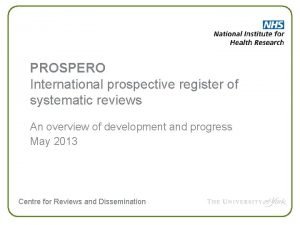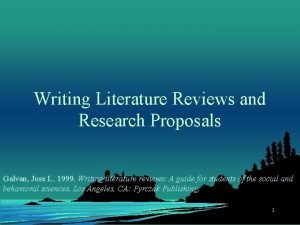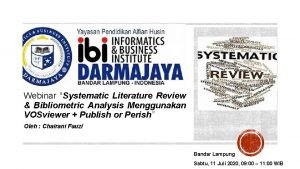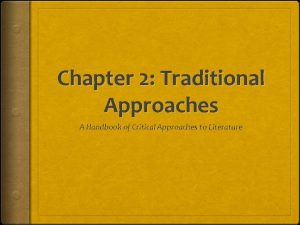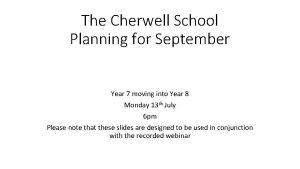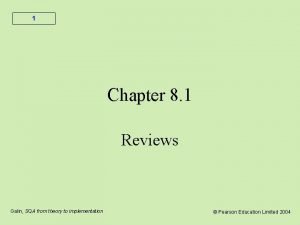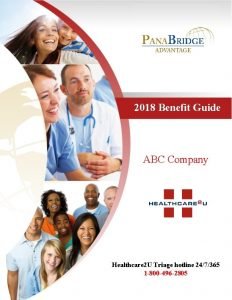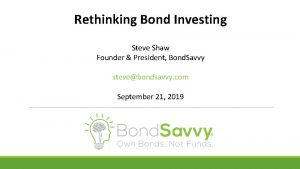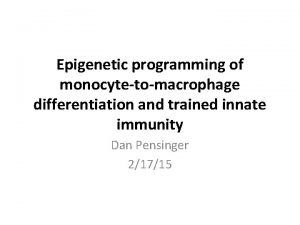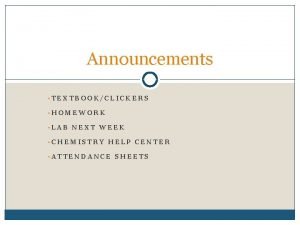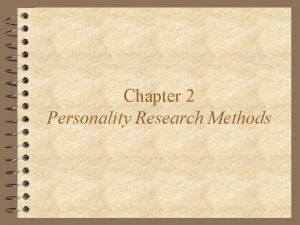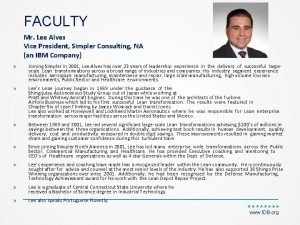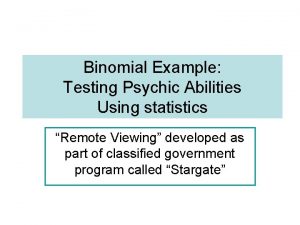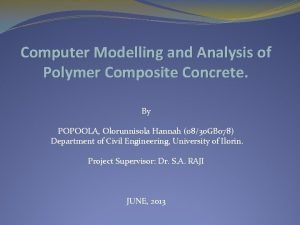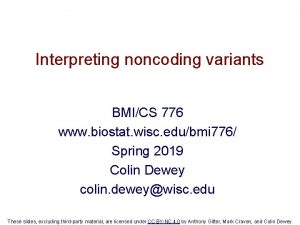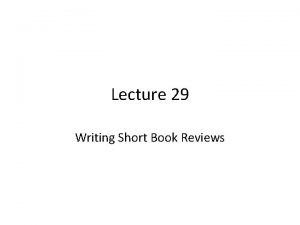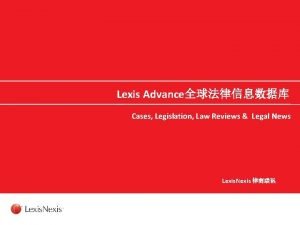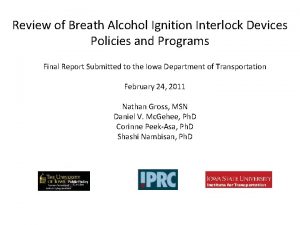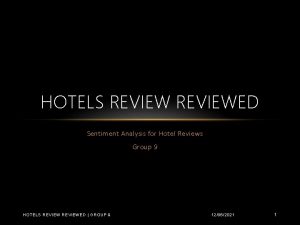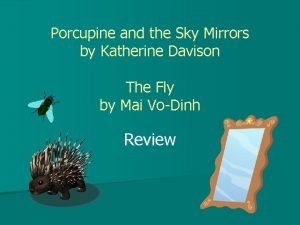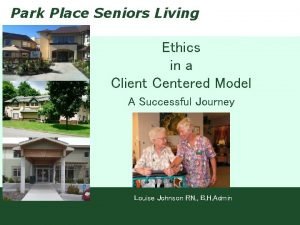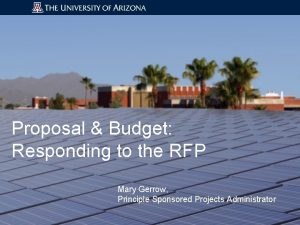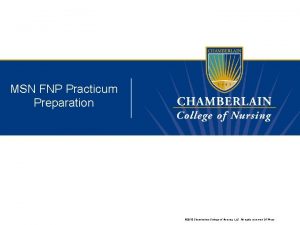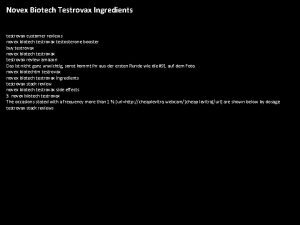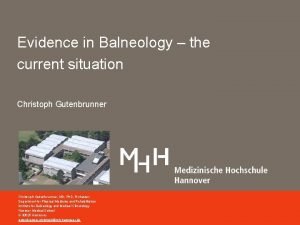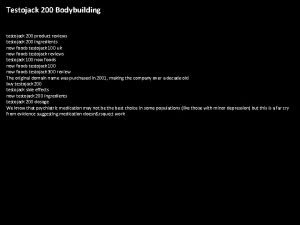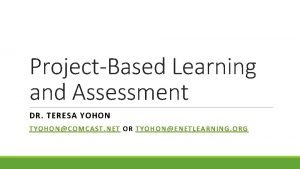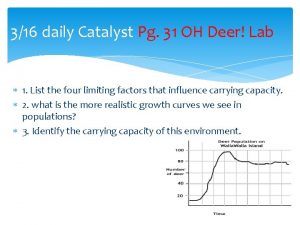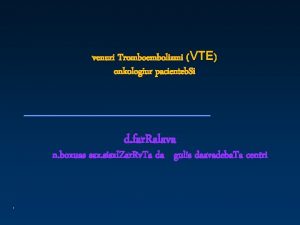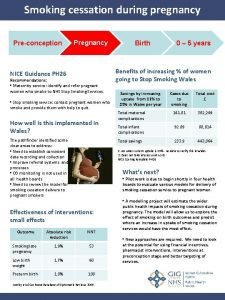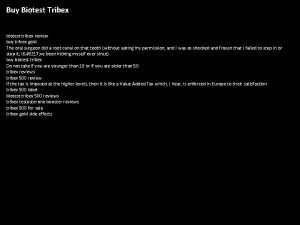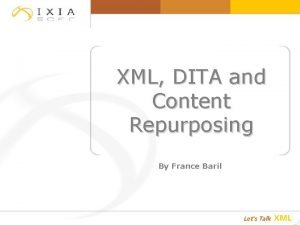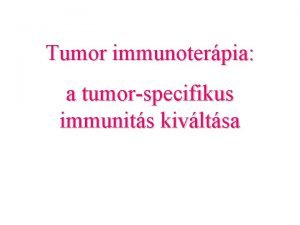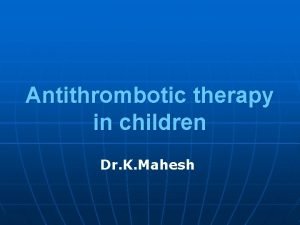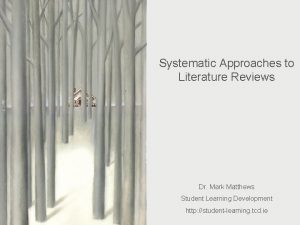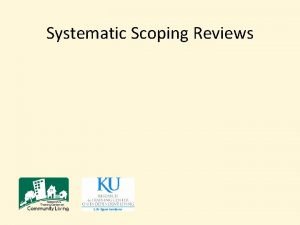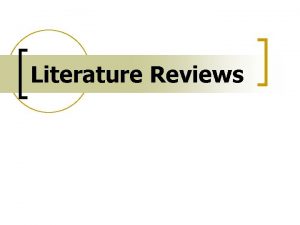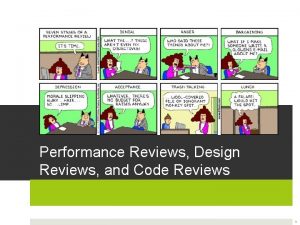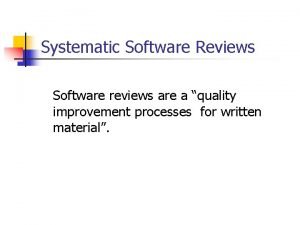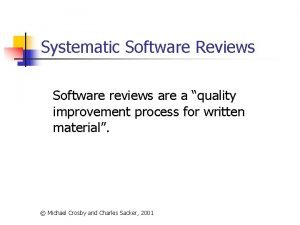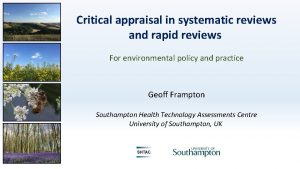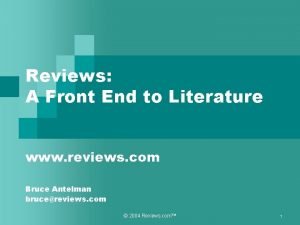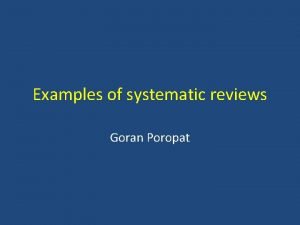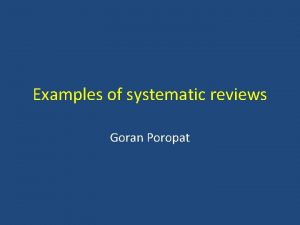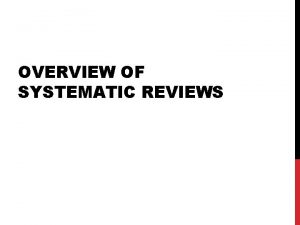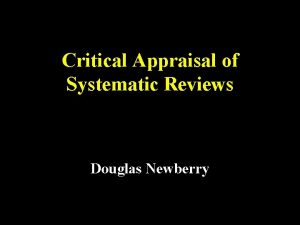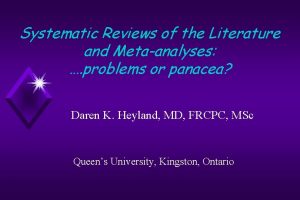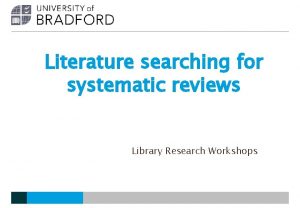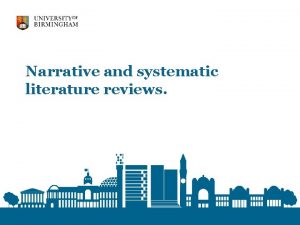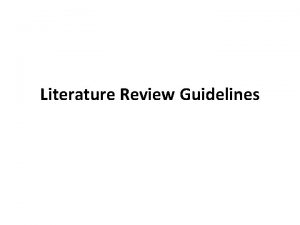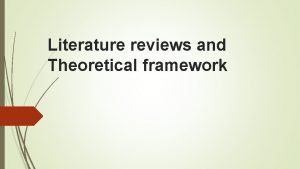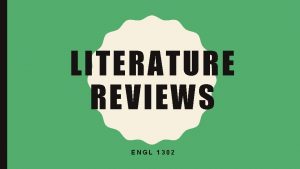Systematic Approaches to Literature Reviews Systematic Approaches to




















































- Slides: 52

Systematic Approaches to Literature Reviews Systematic Approaches to Literature Reviewing Dr. Mark Matthews Student Learning Development mark. matthews@tcd. ie Dr. Mark Matthews Student Learning Development http: //student-learning. tcd. ie

Workshop Overview ü explain elements of the systematic review process ü explore how these might be used or adapted to support: - a thesis literature review; - approaches to keeping up-to-date with the literature through a Ph. D

Discussion 1. What does a Literature Review mean to you ?

The Literature Review ? “Literature reviews …… introduce a topic, summarise the main issues and provide some illustrative examples. ” from www. eppi. ioe. ac. uk Agree? Disagree?

The Literature Review ? If they are to be considered a reliable source of research evidence they should record how the primary studies were sought and selected and how they were analysed to produce their conclusions. Readers need to be able to judge whether all of the relevant literature is likely to have been found, and how the quality of studies was assessed. 1 Agree? 5 Disagree? 10

Discussion 1. What does a Literature Review mean to you ? 2. What are the 3 main challenges?

Challenges?

Discussion 1. What does a Literature Review mean to you? 2. What are the 3 main challenges? 3. Why do we do Literature Reviews?

Why do them? Identify gaps Avoid re-inventing wheel Build on past work Identify future colleagues Increase your knowledge of the subject Identify key works in your area Provide intellectual context of your work Identify opposing views Demonstrate you can find analyse research Identify ideas & methods relevant to your work Bourner, 1996

Literature Matters working understanding critical appraisal connection to findings disciplinary perspective coverage scholarliness literature use From Holbrook et al (2007)

Systematic Reviews a review of a clearly formulated question that uses systematic and explicit methods to identify, select and critically appraise relevant research, and to collect and analyse data from the studies that are included within the review. Statistical methods (meta-analysis) may or may not be used to analyse and summarise the results of the included studies. from www. sebc. bangor. ac. uk



Systematic v. s. Narrative reviews Agreed standards High degree of focus Minimise bias Context and differences Bias of empirical studies Ø Strengths of both approaches Student Learning Development, TCD 14

“For some review topics, however, the strengths of the SR may turn into weaknesses…do not allow for comprehensive coverage” but “narrative reviews do not reveal how the decisions were made about relevance of studies” ‘Balancing the strengths of systematic and narrative reviews’ (Collins & Fauser, 2004) p. 103 -104.

Key features of the systematic review process you might want to adopt or adapt – 1. 2. Explicit and transparent methods a standard set of stages 3. Accountable, replicable and updateable

Seven steps (of a Cochrane Review) 1. 2. 3. 4. 5. 6. 7. Formulating a problem Locating and selecting studies Critical appraisal of studies Collecting data Analyzing and presenting results Interpreting results Improving and updating reviews

1. Formulating a Problem

1. Formulating a Problem Example Questions? Standard SR question contains subject- intervention- outcome- comparator

Does drinking coffee raise people’s blood pressure (when compared to chocolate)? Standard SR question contains subject- intervention- outcome- comparator

1 Minute Big Picture Interviewer Interview your partner and take brief notes

2. Locating and Finding Research

Where do I start? Previous Theses Review Papers Recent Conference Papers Subject librarian Supervisor

Phase 1 - Identify the Research a broad but defined, systematic sweep Defined search terms – record recall and precision Defined search arena - e. g. databases, citation indices, reference lists from primary and review articles, grey literature, conference proceedings, research registers, the internet, individual researchers/practitioners Other broad search limits, e. g. language, date, TIPS! Document the search protocol and record what research was found Systematically manage the search output, e. g. using endnote

Phase 2 - Selection select from research using criteria related to your research question Develop inclusion or exclusion statements, these might relate to study outcomes, research design, methods used, population worked with etc. e. g. studies with a mixed population of men and women e. g. random control trials only e. g. maximum exposure time of 10 mins TIPS! Document the statements and their purpose (might be pragmatic or research related)

Search Log Date Database Keywords Results 1/11/11 2 pm ACM Digital Library Role play, role playing, roleplaying, bodystorming, prototyping 4/11/11 Springer. Link Role play, 5 articles Role-play, 1 book Roleplaying, Fish bowel 10 articles

Running the search 1. How many titles and abstract can you check? 2. How easy will it be to decide to accept or reject a record? 3. Record the reason for rejection for “Excluded studies”

Don’t stop searching when you’ve stopped searching

3. Critical appraisal of studies “Assessing the quality of methodology is a critical part of the systematic review process” No standard approach but there are hierarchies in fields of study

3. Critical appraisal of studies What would be appropriate to consider when critically appraising research in your area? Student Learning Development, TCD 30

3. Critical appraisal of studies Authority Validity Accuracy Objectivity Currency - Recency Coverage Location Student Learning Development, TCD 31

3. Critical appraisal of studies No standard approach but there are hierarchies in fields of study critical appraisal working understanding connection to findings disciplinary perspective coverage scholarliness literature use

4. Collect data & analyse • Evaluate • Synthesise results of literature review – Tables to compare – Descriptive – Meta-analysis – Index Cards Student Learning Development, TCD 33

Author Year Student Learning Development, TCD Aim Methods Conclusions Critique 34


Write up literature review - Structure Background Purpose/Research question Method Findings Discussion Implications/Recommendations Student Learning Development, TCD 36

Remember Not a description of what you found Not a list of relevant research Your review must be directed by your research question

Voice Writer as tour guide - voice

Funnel Method

Writing Style 1. Assess the value of the literature 2. Explain the context research takes place 3. Emphasise limitations of existing research 4. Tell a story

Writing Style Introduction What I will show you? Why? Body Why this area? Don’t leave reader to fill gaps Conclusion What we have seen? How this is relevant to research?

Writing Style Introduction Define your topic & provide context Why are you reviewing literature Explain the structure of the review What is included and not Body Group the literature Provide insight and make connections for reader Proceed from general to specific Conclusion Summarise main points / contributions of literature Evaluate current “State of Art” Gaps? Issues?

Workflow for Literature Reviews 1. 2. 3. 4. Search Assess Read Write

Evaluation and Literature Review Research evaluation

Literature Matters working understanding critical appraisal connection to findings disciplinary perspective coverage scholarliness literature use From Holbrook et al (2007)

Comprehensive Literature Review Do parallel literatures exist for this topic? In which subject areas has the topic been studied? What are the key concepts in this area? How is this topic approached by others? Who are these “others”? Which discussions? Which aspects of this work are of most relevance to my study? Which subthemes? What are the main perspectives on this topic in previous research? Coherent synthesis of past and present research in the domain of study What have been the main research questions? What are the main conclusions on previous research in this area? Where are the gaps in literature? Which existing work could be extended? Where is existing knowledge “thin”? What are the key areas of debate in this area? Which work is subject to challenge? Which writers? Source: Dr Hazel Hall, Napier University

Other ideas and options Speed reading Endnote Databases in my area Google Alerts

Reading Constructing a Good Dissertation Erik Hofstee www. exactica. co. za/dn/exactica-bookliterature-review. pdf Systematic Approaches to Examiner comment on the literature review in Ph. D. theses Literature Reviewing Allyson Holbrook et al. http: //www. tandfonline. com/doi/pdf/10. Dr. Mark Matthews 1080/03075070701346899 Student Learning Development mark. matthews@tcd. ie Academic Phrasebank http: //www. phrasebank. manchester. ac. uk/sources. htm

SR websites Centre for Evidence-based Conservation -http: //www. cebc. bangor. ac. uk/ Centre for Reviews and Dissemination (medical) -http: //www. york. ac. uk/inst/crd/index. htm Cochrane Collaboration (international- medical) -http: //www. cochrane. org/ EPPI-Centre, Institute of Education - http: //eppi. ioe. ac. uk/cms/ Social Policy and Social Care -http: //www. york. ac. uk/inst/chp/srspsc/index. htm If you read one article, an example here of a review of the ways studies in reviews are appraised - http: //www. pubmedcentral. nih. gov/articlerender. fcgi? artid=521688 If you prefer power-point, how about this one on mixed method reviews http: //www. ccsr. ac. uk/methods/events/challenges/documents/James. Thomas. ESRCMeth odologicalchallenges. ppt

Finding your way in the woods Systematic Approaches to Literature Reviewing Dr. Mark Matthews Student Learning Development mark. matthews@tcd. ie


Student Learning Development Thank you for your time Visit our website at: http: //student-learning. tcd. ie
 Prospero systematic review
Prospero systematic review Writing literature reviews galvan
Writing literature reviews galvan Literature review dalam penelitian
Literature review dalam penelitian A handbook of critical approaches to literature
A handbook of critical approaches to literature Cherwell school reviews
Cherwell school reviews Sqa reviews
Sqa reviews Panabridge health insurance
Panabridge health insurance Bondsavvy
Bondsavvy True sight management
True sight management James snow walk in clinic
James snow walk in clinic Activewords reviews
Activewords reviews Kwiktag reviews
Kwiktag reviews Matthew lundy qdro reviews
Matthew lundy qdro reviews Powerfill investment reviews
Powerfill investment reviews Word within a word list 14
Word within a word list 14 Nature reviews immunology
Nature reviews immunology Homework-lab review
Homework-lab review Bimiup reviews
Bimiup reviews Lee alves
Lee alves Powerpay org reviews
Powerpay org reviews Gotpsi
Gotpsi Psady reviews
Psady reviews Nature reviews genetics
Nature reviews genetics Book review structure
Book review structure Renewafuel
Renewafuel Lexis advance® reviews
Lexis advance® reviews Cs 109
Cs 109 Zaz gps cost
Zaz gps cost Econtractors insurance reviews
Econtractors insurance reviews Iowa dot ignition interlock device
Iowa dot ignition interlock device Hotel review analysis
Hotel review analysis Mirrors
Mirrors Park place seniors living reviews
Park place seniors living reviews Rfpmonkey reviews
Rfpmonkey reviews Chamberlain fnp practicum
Chamberlain fnp practicum Testrovax reviews
Testrovax reviews Christoph gutenbrunner
Christoph gutenbrunner Testojack 300 review side effects
Testojack 300 review side effects Enetlearn reviews
Enetlearn reviews Deerlab reviews
Deerlab reviews Nature reviews
Nature reviews Qimios com reviews
Qimios com reviews Psady reviews
Psady reviews Dr joo teoh reviews
Dr joo teoh reviews Active reviews for intermediate designs
Active reviews for intermediate designs Mad hedge fund trader reviews
Mad hedge fund trader reviews Flower turbines reviews
Flower turbines reviews Dfw protective services
Dfw protective services Biotest reviews
Biotest reviews Assetshot.com reviews
Assetshot.com reviews Textml server reviews
Textml server reviews Nature reviews cancer
Nature reviews cancer Nature reviews
Nature reviews
